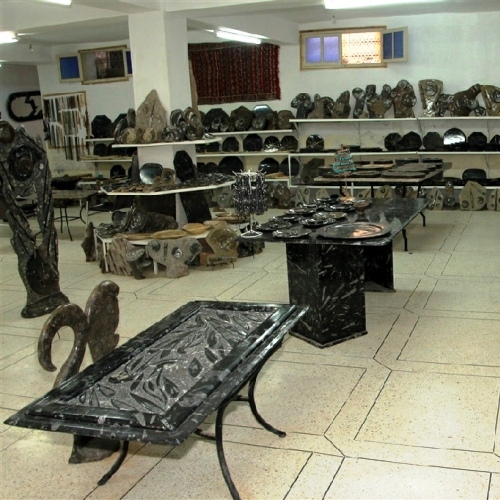Geology, Mineralogy and Fossils
Morocco is a paradise for people interested in paleontology and mineralogy, both for the number of fossils and for easy access to them because they are in areas of bare rock. During the Devonian period, the Paleozoic Era, about 380 million years ago, the Moroccan Sahara (Rissani) was a great prehistoric ocean, the first proto-Tethys Mediterranean Sea. The southeast of the Moroccan Sahara is now a rich source of a large number of fossils. Paleontological Research indicates that in the Arfoud area it was a seabed, where there were many types of marine animals, some of which do not exist today. Geologically, there are many mines and quarries, where fossils are embedded in huge rocks, each quarry has its own characteristics in terms of age, raw materials, and color. Virtually all the fossils you find for sale are true, although there are also some other fakes. Regarding minerals, you have to be more careful, since many are imported from South America for sale to tourists.
Trilobites: Extracted from the Cambrian and Ordovician rocks of the Antiatlas. The specimens of phacops are not very abundant but very well preserved. They are so abundant that they are not usually fakes (except those larger than 5 cm)
Ammonoideos (Ammonites): You can find several species, almost all from the Cretaceous of the Central High Atlas platform. The most abundant in stores are the calycoceras and the procheloniceras (Cretaceous of the Antiatlas) and the mammites (Cretaceous of the High Atlas). Al Calycoceras they often chiseling the umbilical area to make them more attractive. The asymmetric heteróceras and almost half a meter in length are impressive.
Orthoceras and goniatites: Extracted in the Ordovician and syllabic rocks of the Erfoud area. They are tremendously abundant, constituting authentic lumaquelas. The rock from which they are extracted is the one used by Erfoud artisans to carve stone ornaments.
Crinoids: They are extracted from the Cambrian deposits of Erg Chebbi, and the specimens are really magnificent... few like those in the world. They work and sell them in Erfoud. They are one of the most valuable fossils you can buy in Morocco.
Shark teeth: They can be found from serratolamma and larger isurus, both cenozoic.
Brachiopods: Large amounts of Rynconellas, from the Jurassic limestones of the high atlas. Spiryfers and cyclothyris are also found
Bivalves: You will find many Rastellum neocomienses.
Gastropods, echinoderms, cnidarians and others exist in stores, but are minorit
Other fossils: we can find for sale fossils of spiders, crabs, scorpions and trilobites with their uncovered antennas of very doubtful credibility.
